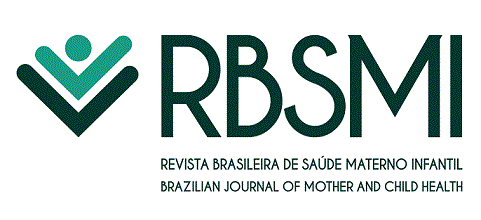Abstract
Objectives:
to investigate factors associated with the route of birth delivery in a hospital extending public and private healthcare services, in the Northeast region in the State of Rio Grande do Sul.
Methods:
a cross-sectional study with 676 postpartum women, conducted from January to May 2017. The data were collected from the hospital records and women were interviewed shortly after childbirth in the maternity. Data analysis was performed by associating the Pearson’s chi-square and the Poisson regression tests with robust variance.
Results:
the prevalence of cesarean sections was 58.7%, that is, 41.7% in public health-care and 83.9% in private healthcare. The main reason for having a cesarean section was having had a previous one (PR=5.69; CI95%=3.64 - 8.90; p<0.001), followed by having source of childbirth financing (PR=1.54; CI95%=1.27 - 1.87; p<0.001), having source of prenatal care financing (PR=1.48; CI95%=1.22 - 1.79; p<0.001), the childbirth and prenatal care professional (PR=1.46; CI95%=1.28 - 1.66; p<0.001) and the prenatal care professional (PR=1.43; CI95%=1.07 - 1.90; p=0.016).
Conclusions:
the high cesarean section rates identified in this study were mainly associated with previous cesarean section. The findings suggest a change in the current childbirth care model in the city, characterized as highly medicalized, focused on the physician and on hospital care.
Key words:
Childbirth; Cesarean section; Risk factors; Healthcare financing
